Fingerprint Test
1/38
Earn XP
Description and Tags
Name | Mastery | Learn | Test | Matching | Spaced |
|---|
No study sessions yet.
39 Terms
loops 65%, whorls 35%, arches 5%
% of each type of fingerprint
3 fundamental principles of fingerprints
They are unique, they can never change, they have ridge
characteristics which allow for classification.
multi factorial trait; both DNA and environment (10-14 weeks gestation)
Origin of fingerprints
ridge characteristics
Minutiae
Latent
Hidden fingerprint
Plastic
3-D fingerprint
Patent
Visible
Photographed, documented, and lifted if possible
All fingerprints must be:
Integrated Automated Fingerprint Identification System
IAFIS
Uncomfortable to Comfortable, thumbs roll in, fingers roll away
How to correctly roll inked prints
Sir William Herschel
Had workers sign contracts with hand prints; fingerprints don’t change over time, and are unique
Sir Edward Henry
The _____ System (based on presence/absence of whorls
Dactylogram
Scientific name for a fingerprint
does not exist, established by state, usually 12
legal minimum for match in court
150
how many minutiae in each print on average
Genes (DNA)
what codes for class patterns
basal layer of epidermis
where are fingerprints formed
Livescan
Digital machine used to take fingerprints
Marcello Malphighi
First to describe loops, whorls and arches
Juan Vucetich
Policeman who abolished anthropometry in favor of fingerprints in Argentine; 1st one to do so
Plain Arch
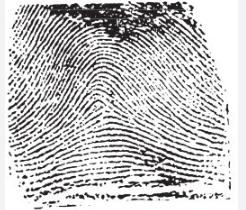
Tented Arch
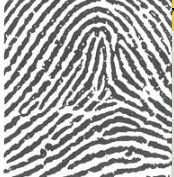
Plain Whorl
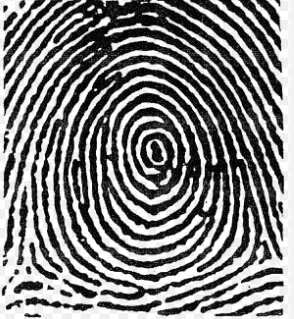
Central pocket loop whorl

Double loop
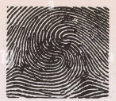
Accidental

Ulnar Loop (Right hand)
little finger opening
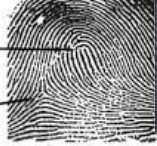
Radial Loop (Right hand)
Thumb side of hand opening
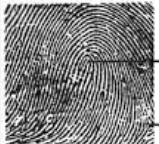
The West Brothers
both prisoners at Leavenworth; identical body
measurements (Bertillon measurements), but different fingerprints – US finally adopted fingerprinting
and discarded anthropometry in favor of fingerprinting as way to identify people. _____ were either
identical twins or cousins; most likely given away at birth as they did not know each other.
Bertillion
Came up with anthropometry; first “mug shots” – body measurements.
Fingerprint Powder
For Non-Porus surfaces
Sticks to Oil and sweat
many different colors
Ninhydrin
Best on paper
Reacts w/ Amino Acids
Permanent Purple
Iodine
Cardboard and Porus Surface
Interacts w/ oils and Carbs in a fingerprint
Temporary orange prints reacts with starch solution and turns purple and permanant
Super Glue
Plastic, Metal, glass
put inside a fuming chamber, settles on amino acids
Permanent white print
Silver Nitrate
Wood + Styrofoam
interacts w/ NACL formed from sweat
black/reddish brown print